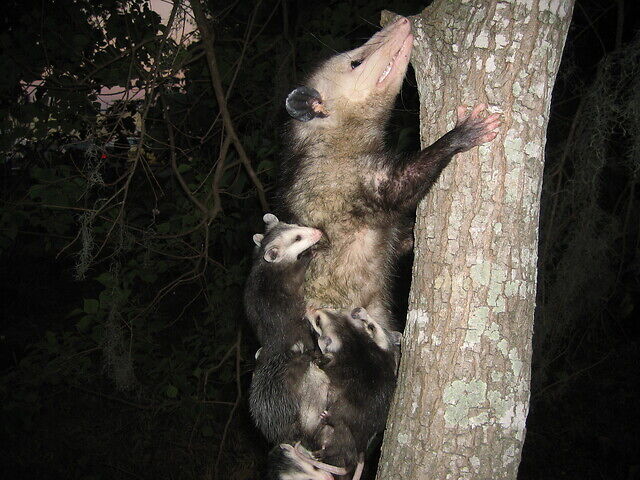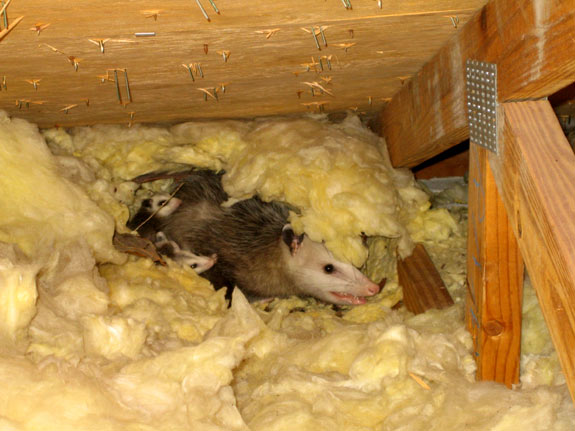Do Opossums Live in Trees?
Unlike many other wild animals, opossums are not inherently an aggressive species, and are ill-equipped to fight predators. They do not have strong claws, and can only growl at their attacker. As a result, they have evolved to find other methods of escaping when confronted or threatened.
Ways of Escape

Playing Dead
One of the opossum’s most infamous abilities is playing dead, whereby the opossum enters an unconscious state and their body automatically puts up a number of defenses to make it both look and smell like it’s dead. Although it is an incredibly convincing method of warding off predators, opossums still need to find ways of avoiding things that want to attack them.
Trees
Almost every species of opossum is semi-arboreal, which means they are perfectly comfortable spending time either in the trees or on the ground. Trees offer natural protection from many predatory species, like owls or other rodents. Many breeds of opossum also have prehensile tails which, like monkeys, are adept at grasping onto things like branches, making the opossums incredibly nimble at moving through trees to avoid their predators.
Climbing
As well as their tails, opossums have thumbs on both their front and back feet, making them expert climbers. Being good at climbing does not just help them avoid confrontation though. It also helps them forage, as opossums can reach fruit amongst the trees. However, because they are omnivorous, most of their time searching for food is spent on the ground, as they are happy to eat insects or even the corpses of other animals, including birds and rodents.
Opossum Shelters

Opossums do not actually live and sleep in trees. Instead, they prefer to make dens on the ground, using their prehensile tails to carry materials for building their shelter. However, they do not share their nests with other opossums and have a habit of moving between dens many times throughout the week, never staying in one place for too long.
Additionally, opossums are not particularly good at creating their own shelters, meaning they often seek out pre-existing places to make their den for the night, such as burrows left abandoned by other animals, cavities in trees or rocks, or just anywhere that is dry, warm, and hidden.
This is why they are often considered by homeowners to be household pests. In their search for shelter, especially in the winter months, opossums will target crawl spaces or even the attics of homes and forage in yards for grubs and other sources of food. Although they are unlikely to cause much structural damage, opossums carry harmful diseases like other pests, whilst their feces have a strong and unpleasant odor. But the challenge for homeowners is actually seeing them, as opossums are nocturnal, meaning they tend to be at their most active at night.